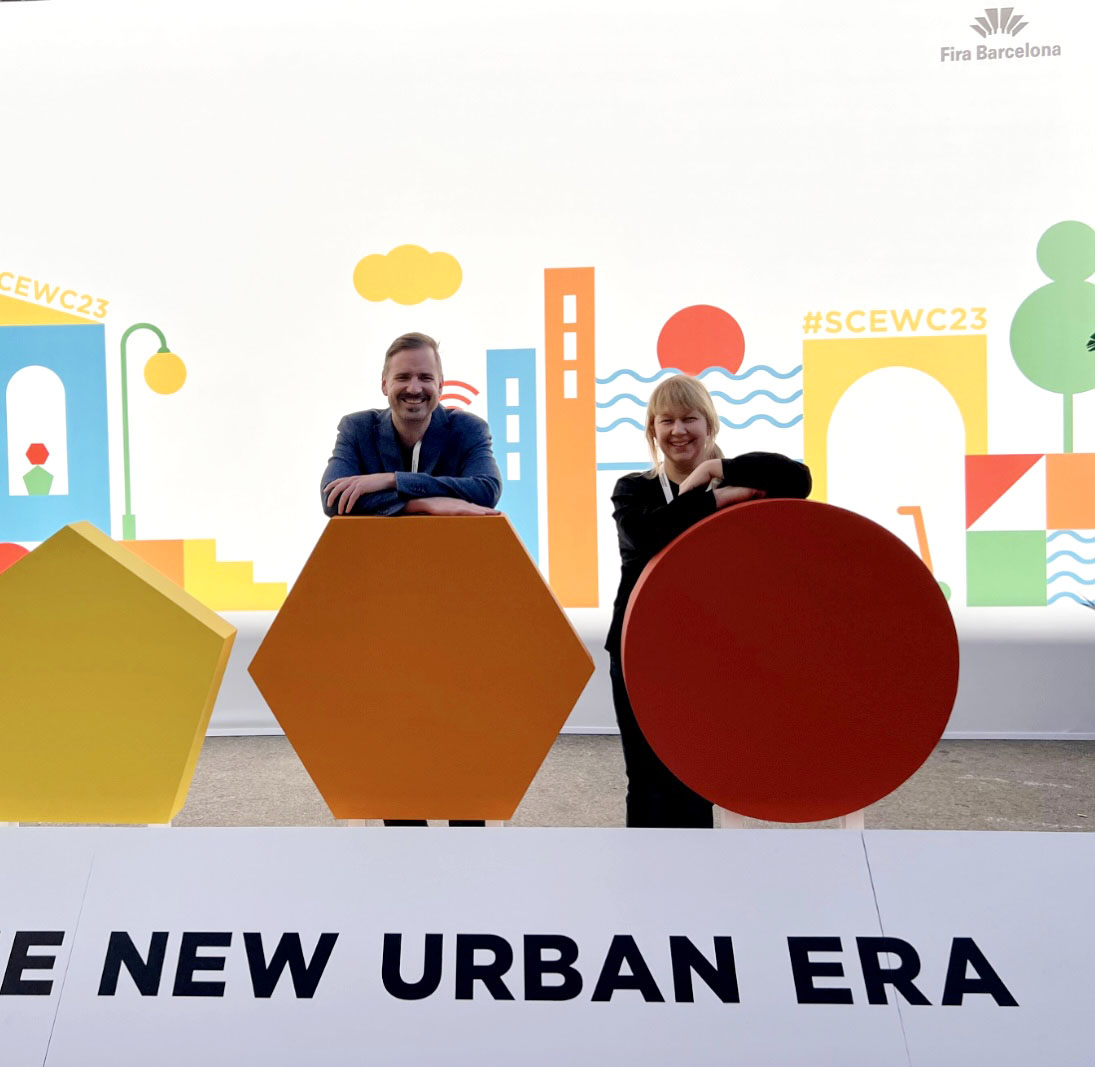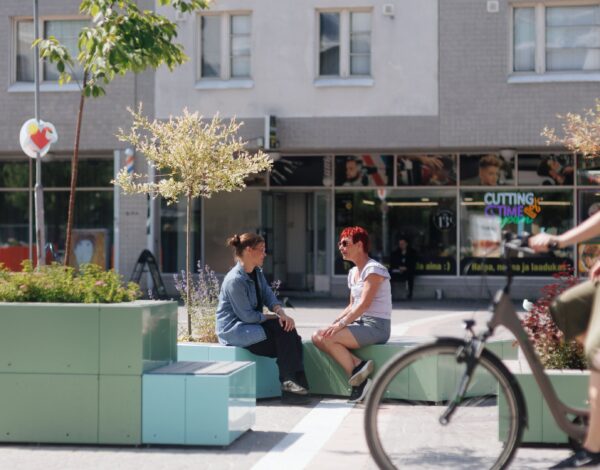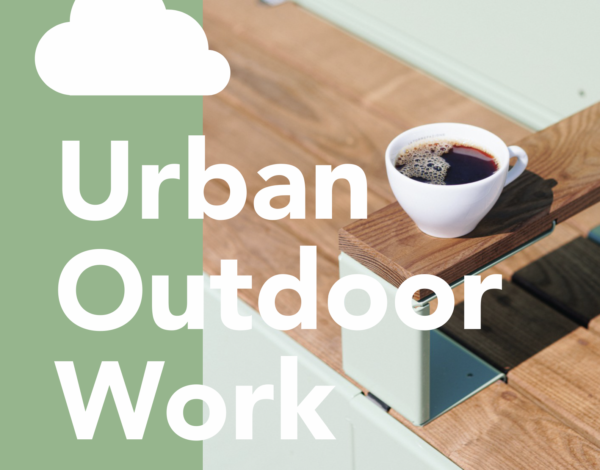Parkly was invited to participate in the Smart City Expo World Congress Nordic & Baltic Pavilion alongside five other innovative companies by Business Helsinki. This opportunity provided us with valuable insights into the operations of extensive expos from our perspective as an impact-driven startup. We gained a better understanding of the current topics emphasized at the expo and our visit to Barcelona was also an opportunity to form new connections and reconnect with our partners and collaborators who also attended the expo.
The expo’s tagline, “new urban era,” resonates with us as we share a commitment to cities striving for greener, more social, and inclusive spaces. Even stronger than in the tech focused expo, we found inspiration in how the host city is taking a leap in urban development embodying these ideals through urban transformation. Although we anticipated the expo to have more discussions and showcases on nature-based solutions, we were pleased to collaboratively showcase such solutions with our partners from Innogreen.
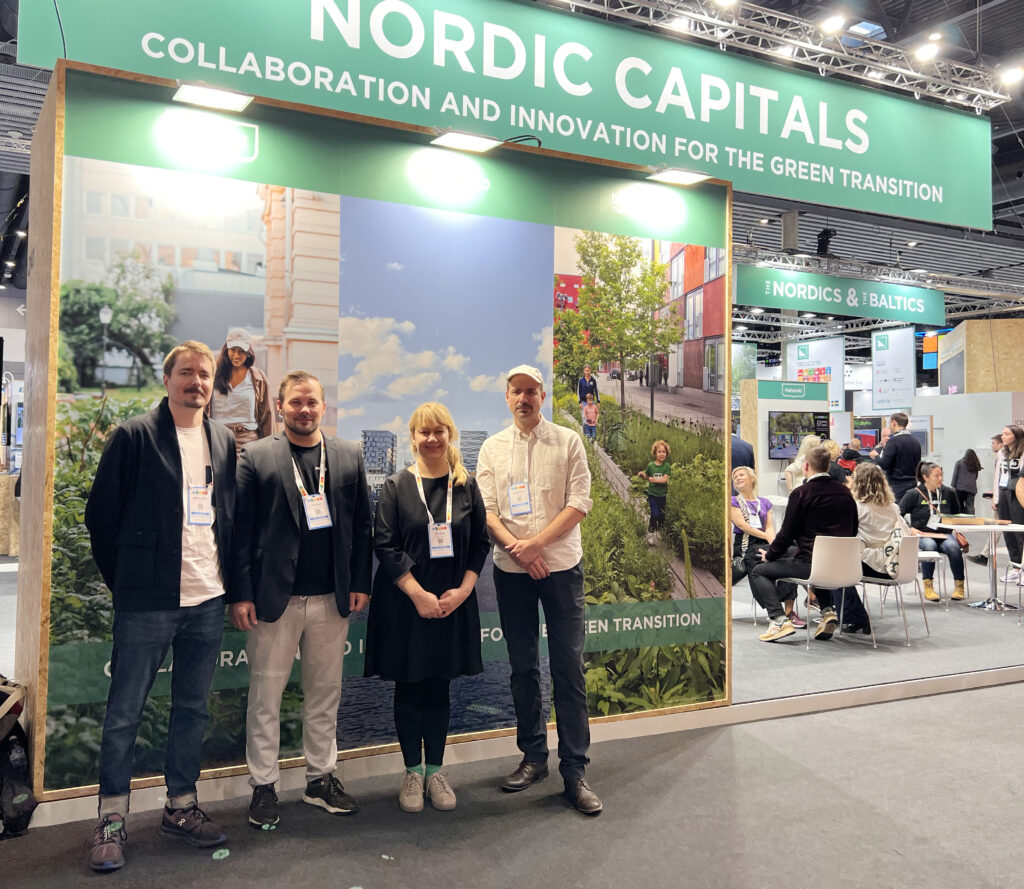
“Net-zero cities are more than just a concept or a goal; as we strive for their realization, we pave the way for a higher quality of urban life overall.” Malin Kock Hansen, DOGA
We had the opportunity to participate in the panel discussion titled “Climate Neutrality in Six Years – How?” hosted by the city of Helsingborg. The panel aimed to highlight the efforts of Nordic and Baltic cities working towards achieving net zero by 2023. There are only six years left to reach this ambitious goal, and many cities still have substantial work ahead of them. Representatives from Helsingborg, Liepaja, and Stockholm shared valuable insights into their ongoing efforts and progress toward attaining climate neutrality. They also highlighted the key challenges they are facing on their journey, including reducing consumption, addressing private transportation and overall traffic issues, and transitioning to fossil-free energy production. They also pointed out the importance of citizen engagement, integration of nature based solutions and generating climate action and solutions on the neighborhood level – something we strongly vouch for with Parkly.
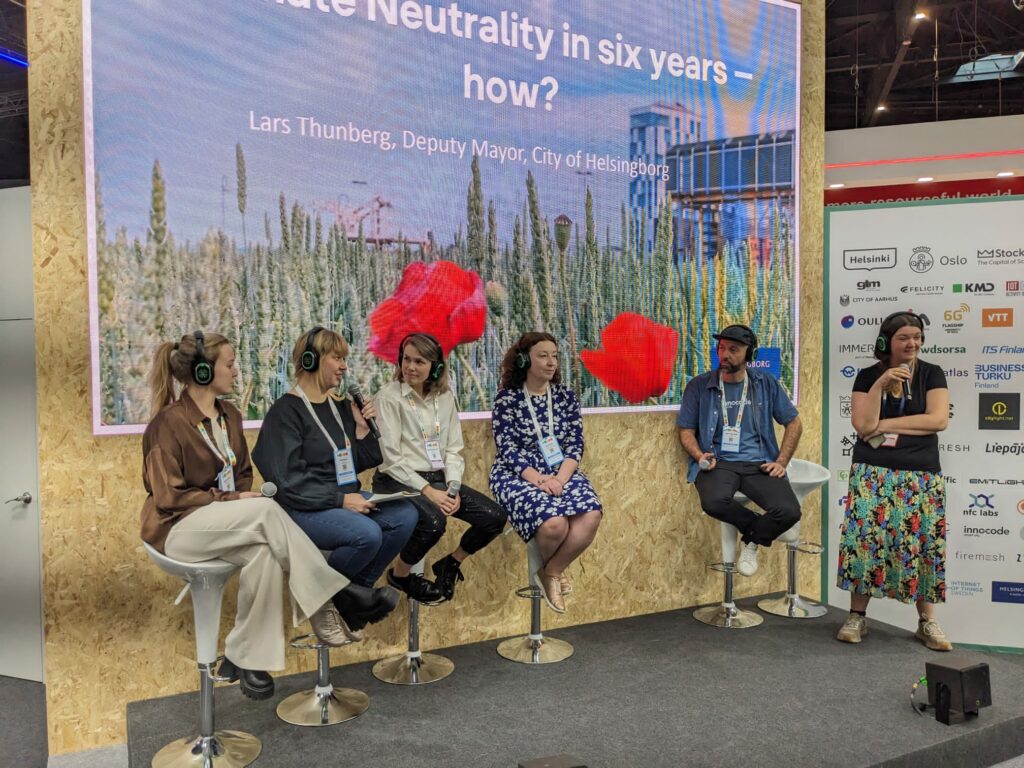
With fellow panelists Malin Kock Hansen (DOGA), Karolina Eklöw (Climate View), Bjarte Falck Olsen (Innocode), Olga Kordas (Viable Cities) and Päivi Raivio (Parkly) the discussion revolved around the actions we need to take as cities, start ups, planners to accelerate the path towards climate neutral cities. We talked about measurability, communications, citizen empowerment, resilience – and for example how greener, more social public places are a way to reimagine our cities collectively. We need to feel, see and experience climate neutral cities where we live, work and move around – not just aim for a target number as Malin Kock Hansen pointed out. Climate-wise cities are healthier, greener, more social – and all these goals can be adjoined to the climate cities. For example, promoting cycling should not only be about moving from A to B through the fastest route – bikeable cities are more than just routes: functioning bike parking, regular water points, innovative servicing, green resting areas and attractive routes with inviting places.
Greening cities is probably the smartest thing you can do
Parkly was also part of the ’Bring your greener solution to Helsinki testbed!“ session hosted by Kaisa Spilling (Forum Virium Helsinki). The session introduced how companies have been testing their solutions in the testbed environment of the city of Helsinki.
Parkly has gained important insights from these experiments and pilot programs, using client and user feedback for product development. Additionally, we have ventured into testing new concepts, including the exploration of “pocket park as a service,” in collaboration with Innogreen. The modular green wall is also a collaboration project which has now been tested in Helsinki: the green structure serves as a barrier, reducing traffic noise by up to 7 decibels – along multiple other benefits. The product is currently accessible for cities, municipalities, and other stakeholders seeking to establish green, inviting spaces in urban environments. As Mikko Sonninen (Innogreen) mentioned, such pilots are important to test the concept in a real life environment – a vital step before offering it more widely to clients.
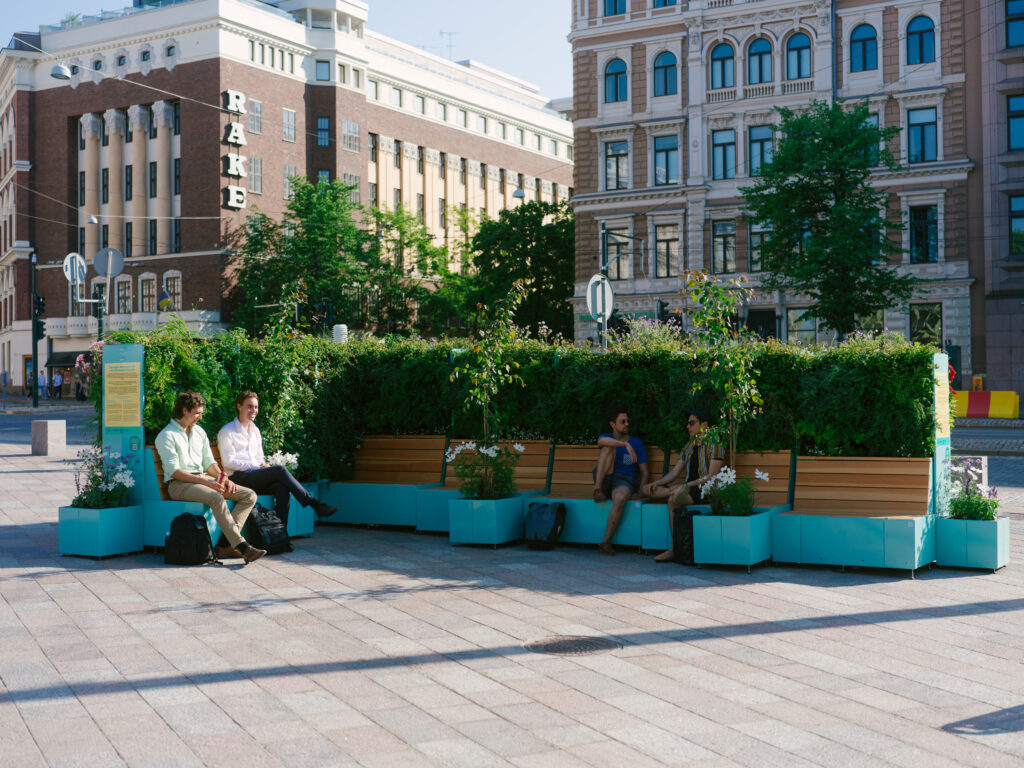
The modular green wall was tested in Helsinki this summer and is now more widely available.
During our final day, we strolled through Barcelona to witness firsthand the aspects we had heard about the city: SuperBlocks convert extensive neighborhood areas into spaces that are more green, socially inclusive, and pedestrian-friendly. These large-scale street transformations encourage a shift toward allocating more space for people and greenery while reducing space for cars. Another interesting initiative is the creation of corner “pocket parks” adjacent to schools, aimed at offering additional space for citizens – as pointed out by Jonathan Zoccoli, a fellow urbanist and architect based in Barcelona.
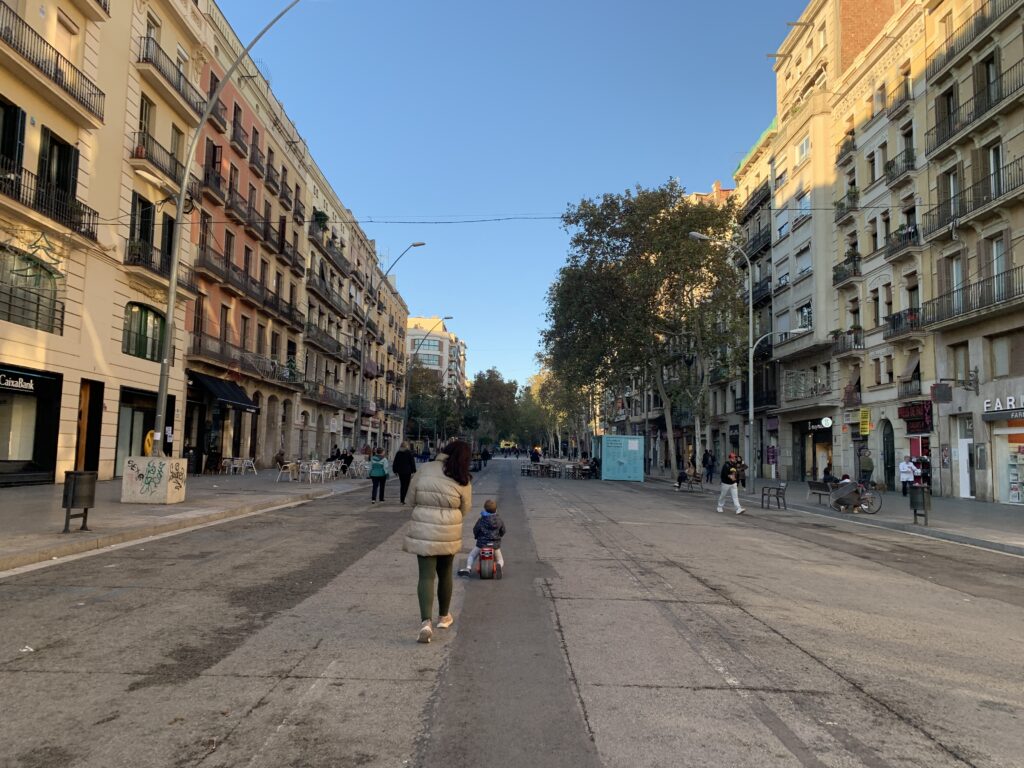
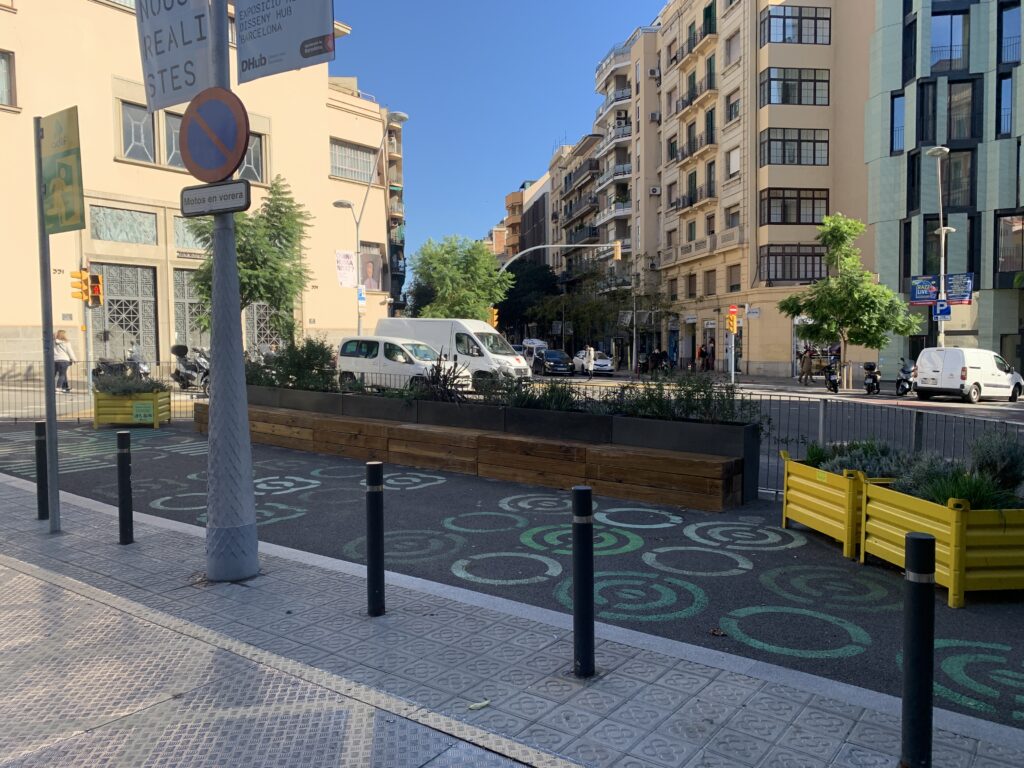
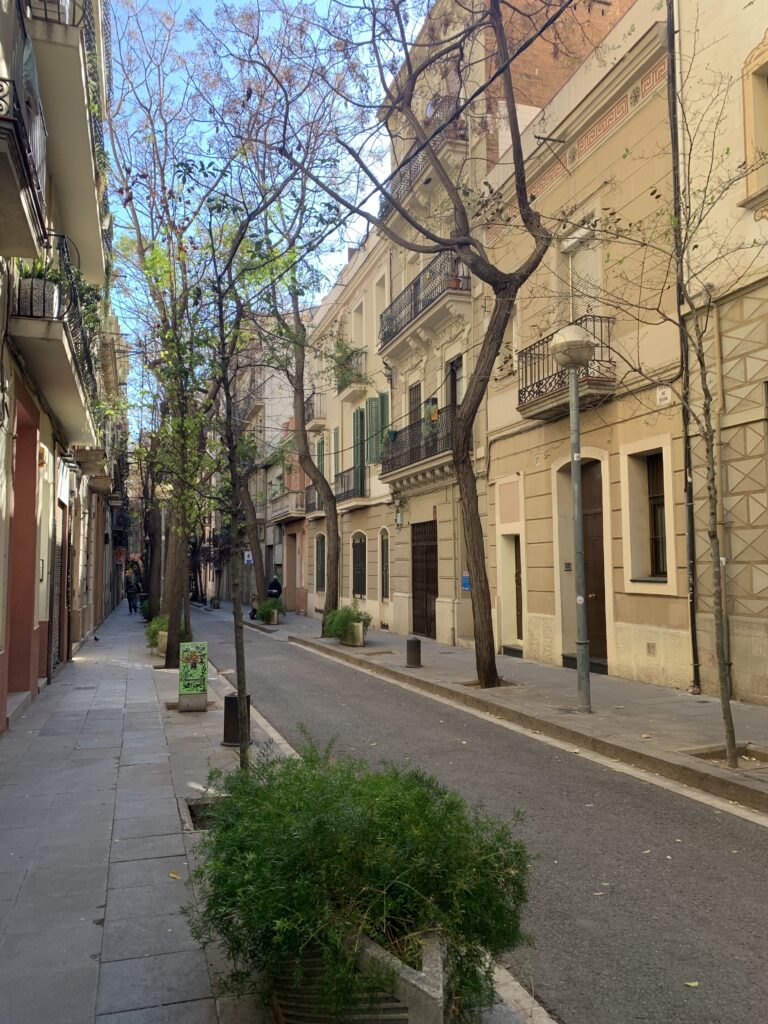
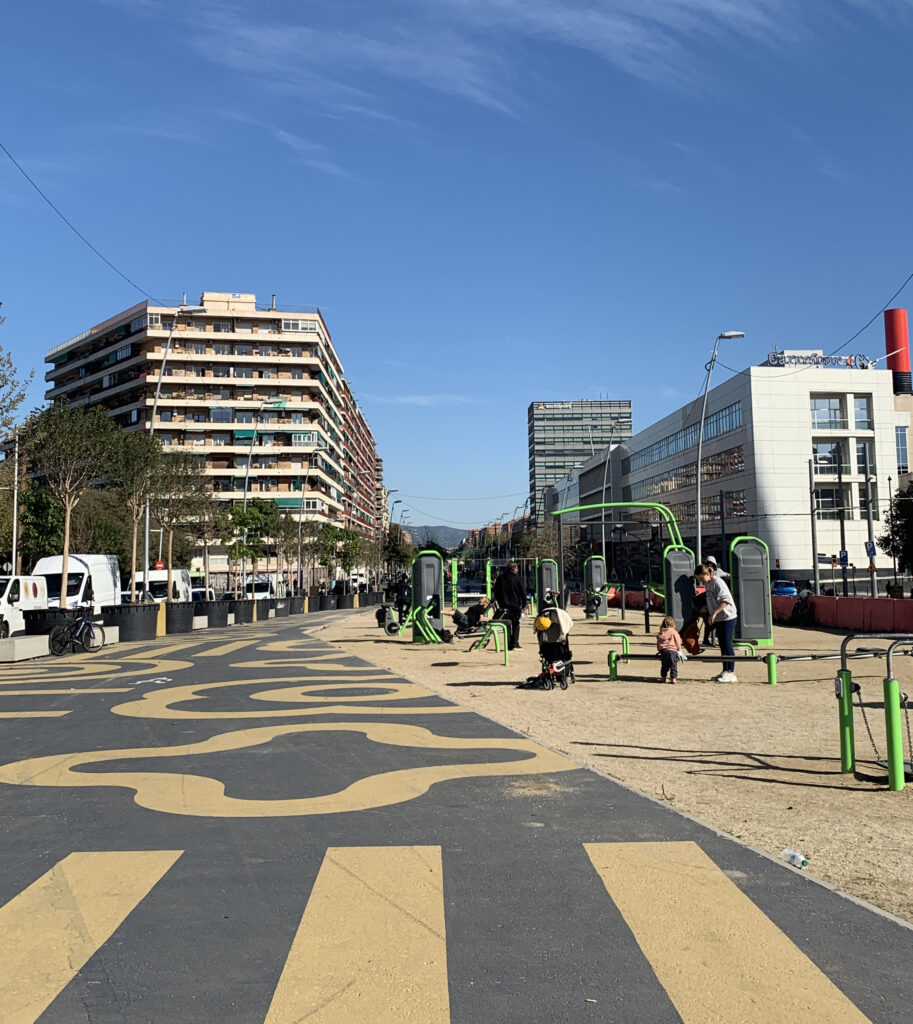
From the street level we “climbed” about 30 floors up to see the city. The exhibition at Mirador Torre Glòries provided an inspiring perspective by portraying cities as ecosystems. In Barcelona, the presence of 320,000 trees comprising 400 different species forms the city’s most significant smart grid. This was very visible from high up – as well very well illustrated in the exhibition’s visualization. The hundreds of thousands of trees are “at work” everyday to mitigate pollution, cool the air, and generate oxygen – the indispensable role of trees as essential urban infrastructure.
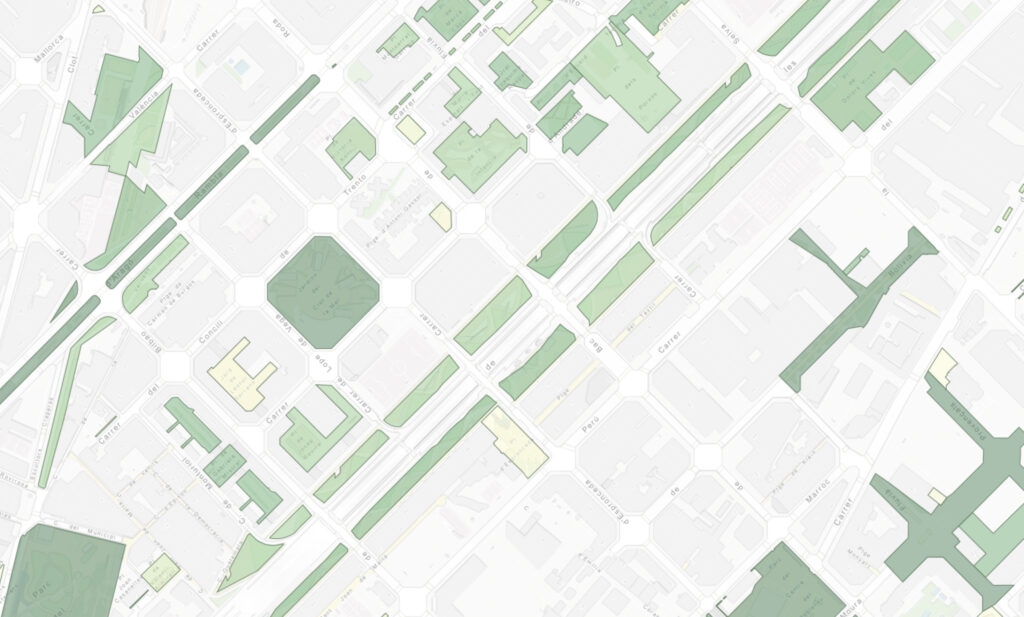
Smart and socially vibrant – for already more than 150 years
As placemakers, the city of Barcelona and its variable public places served as a source of inspiration during the expo. Exploring the densely populated yet human-scale district of Gràcia and other neighborhoods, we observed the vibrancy and diversity of the ground-level spaces and how social life flourished in well-proportioned squares. One particular square captivated us, prompting numerous stops to people-watch, enjoy coffee and snacks, and peruse magazines at the kiosk. The square, Plaça de la Vila de Gràcia, showcased fascinating vibrancy and inclusivity: during early evenings, a group of kids used the arches of the clock tower as goalposts for a game of football, and in the early morning, a gathering of elderly ladies engaged in a dance lesson, with small toddlers joining in the movement. The square’s benches, mostly full any time of the day, highlights the simple act of sitting down as one of the most important functions: to slow down, to use the city, to meet others. This exemplifies that future-proof cities can draw valuable lessons from older spaces by keeping things simple and inclusive. Only after establishing such foundations can technology be employed to enhance our urban environments.
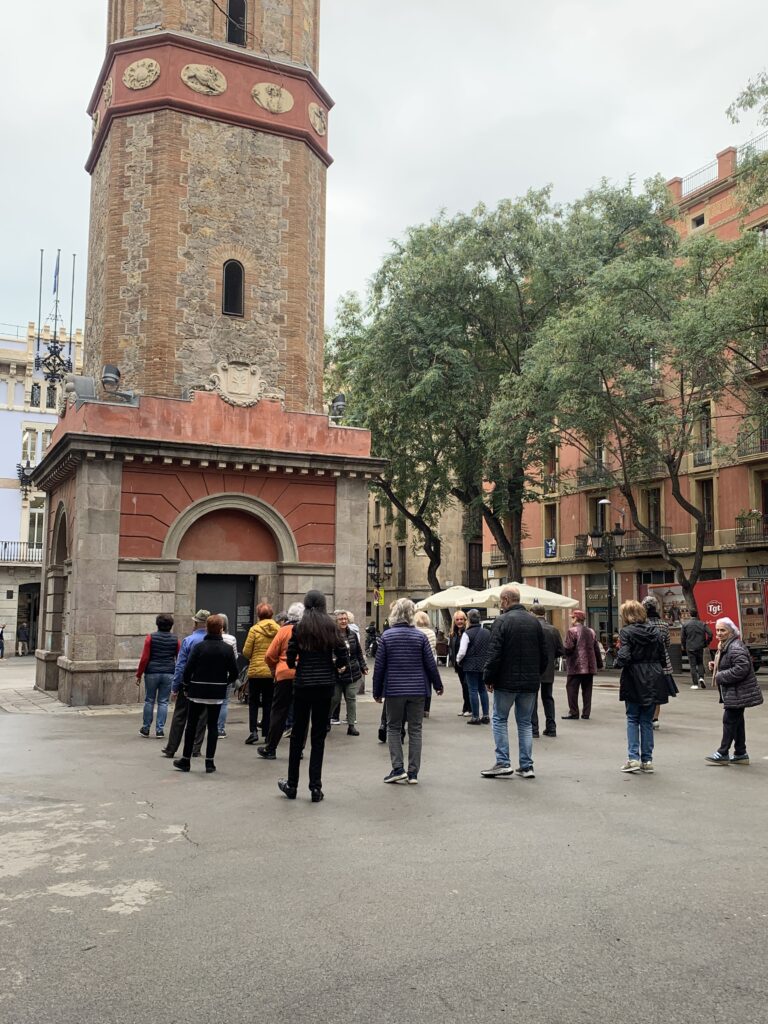
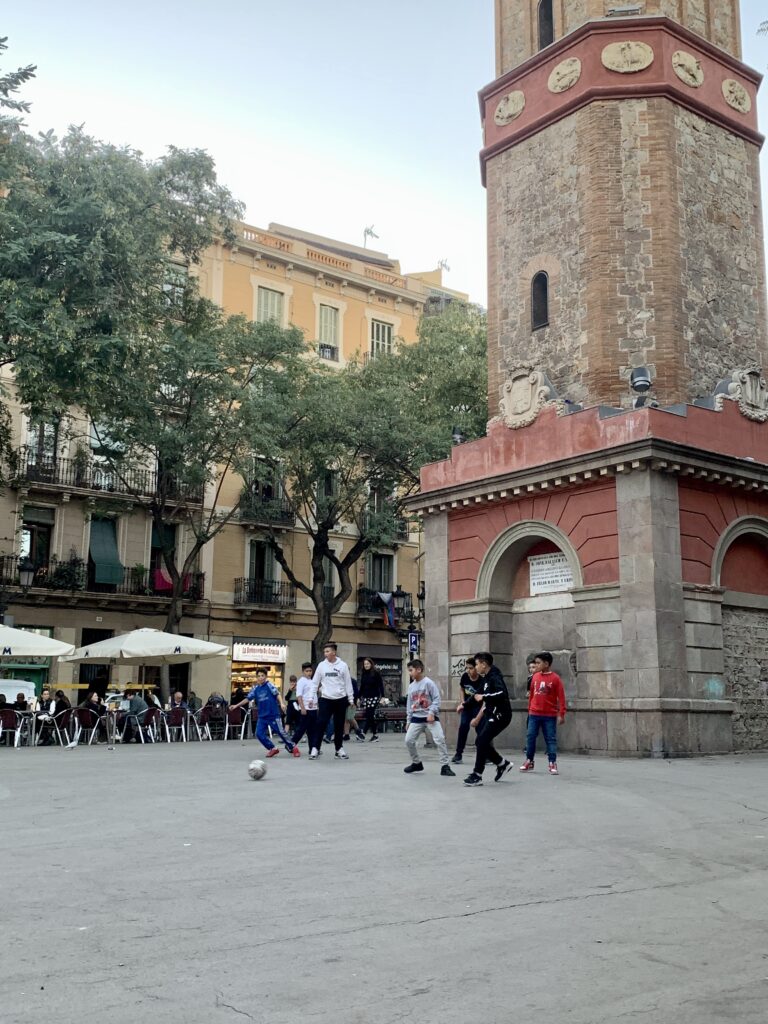
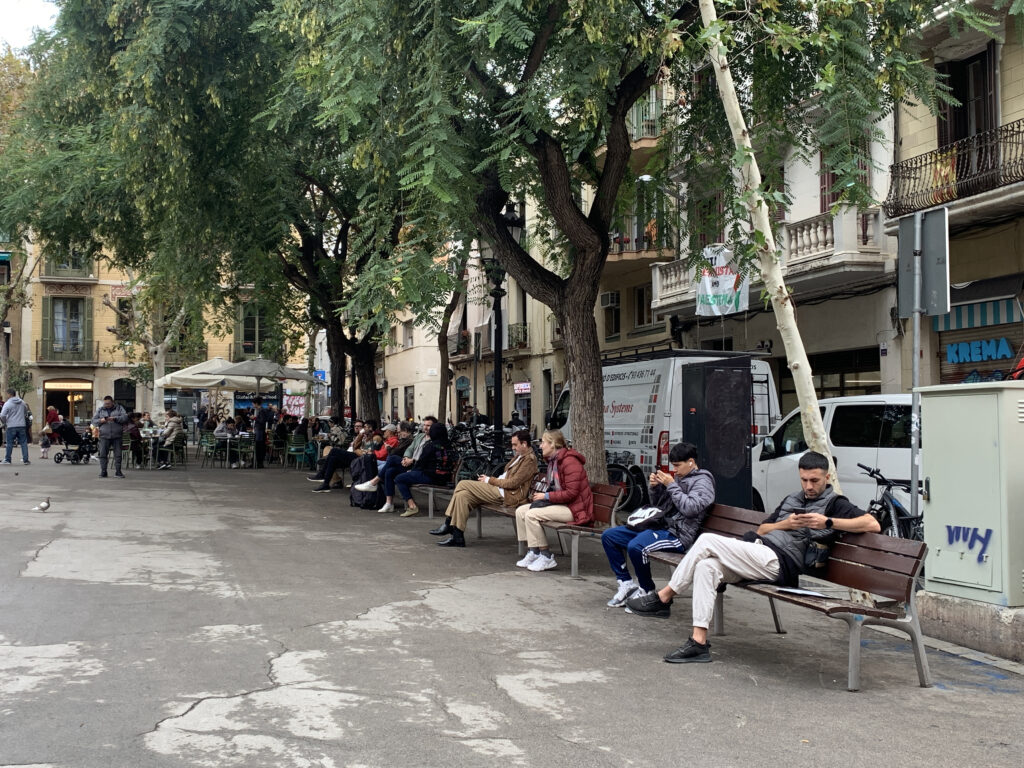
Explore the Barcelona Biodiversity Atlas: https://ajuntament.barcelona.cat/atlesbiodiversitat/en/
We would like to thank Business Helsinki and Urban Tech Helsinki for the support to attend the Smart City Expo.
